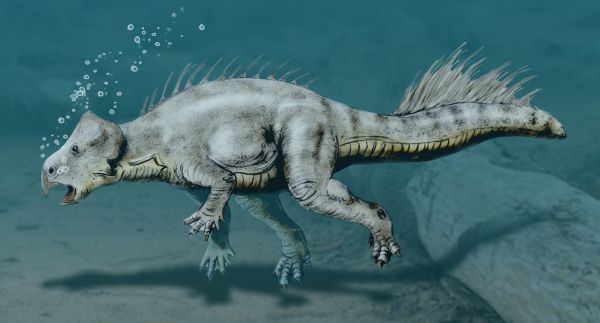 | The Nile crocodile, star of Animal Planet’s Into the Dragon’s Lair, is one of Africa’s most fearsome predators, and for good reason. This awesome reptile dines on antelope, buffalo, young hippos and large cats, and even people when the opportunity arises. It’s also one of the world’s most protective and attentive parents. Get a few basic facts about a vicious predator with a soft side. |





New database version available. More than 100 new species in 2010. Leer más.
 | Scientists from South Korea, the United States and Japan analyzed fossil evidence found in South Korea and published research describing a new horned dinosaur. The newly identified genus, Koreaceratops hwaseongensis, lived about 103 million years ago during the late Early Cretaceous period. The specimen is the first ceratopsian dinosaur from the Korean peninsula. The partial skeleton includes a significant portion of the animal’s backbone, hip bone, partial hind limbs and a nearly complete tail. |
 | Desde hace un par de días barre internet la noticia del nuevo ceratopsio Koreaceratops, un individuo hallado en el Cretácico inferior de Corea del Sur, que ha tomado el nombre de su país. Se trata de un ceratopsio basal, del que se han hallado la cadera y la cola, junto con algunos huesos de las extremidades posteriores. Como miembreo basal tiene características “protoceratopsianas”, cómo las altas espinas neurales de su cola, las cuales han generado todo el ruido de Descubren un dinosaurio “nadador”, estilo de vida anfibio, etc… |
 | Evolutionary advantage often makes for show-stopping stuff — a cheetah’s speed, for example, or a moth’s almost perfect mimicry of tree bark. In some snails, however, it’s simply down to a poor fit with a snake’s jaw. Some species of Satsuma snail have shells that coil to the left, which probably evolved because the snakes that prey on them have jaws specialized for feeding on the molluscs’ right-coiling ancestors, a study published today in Nature Communications suggests. |






